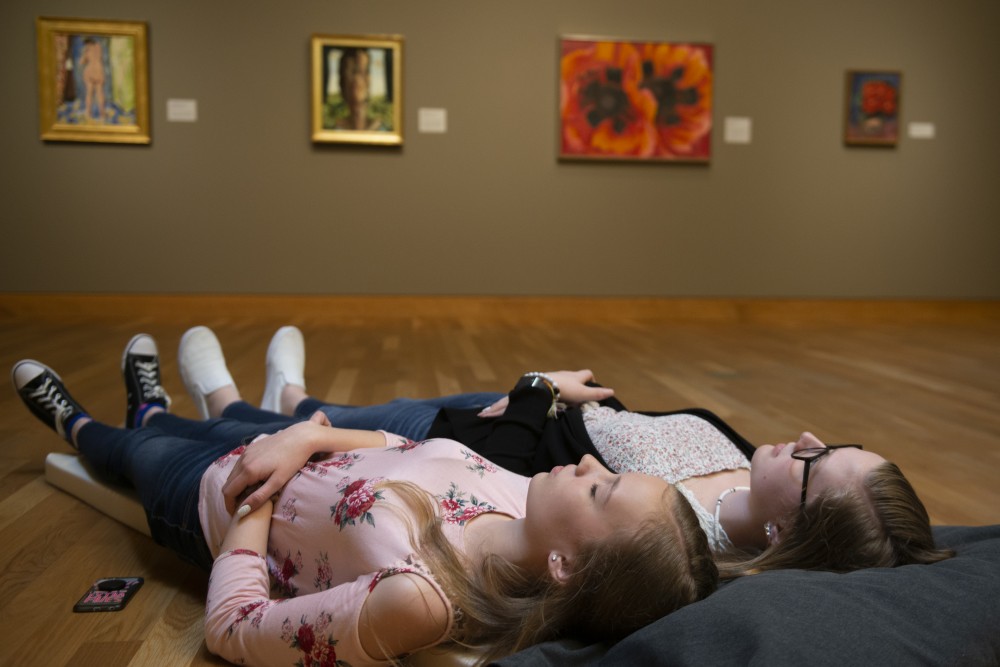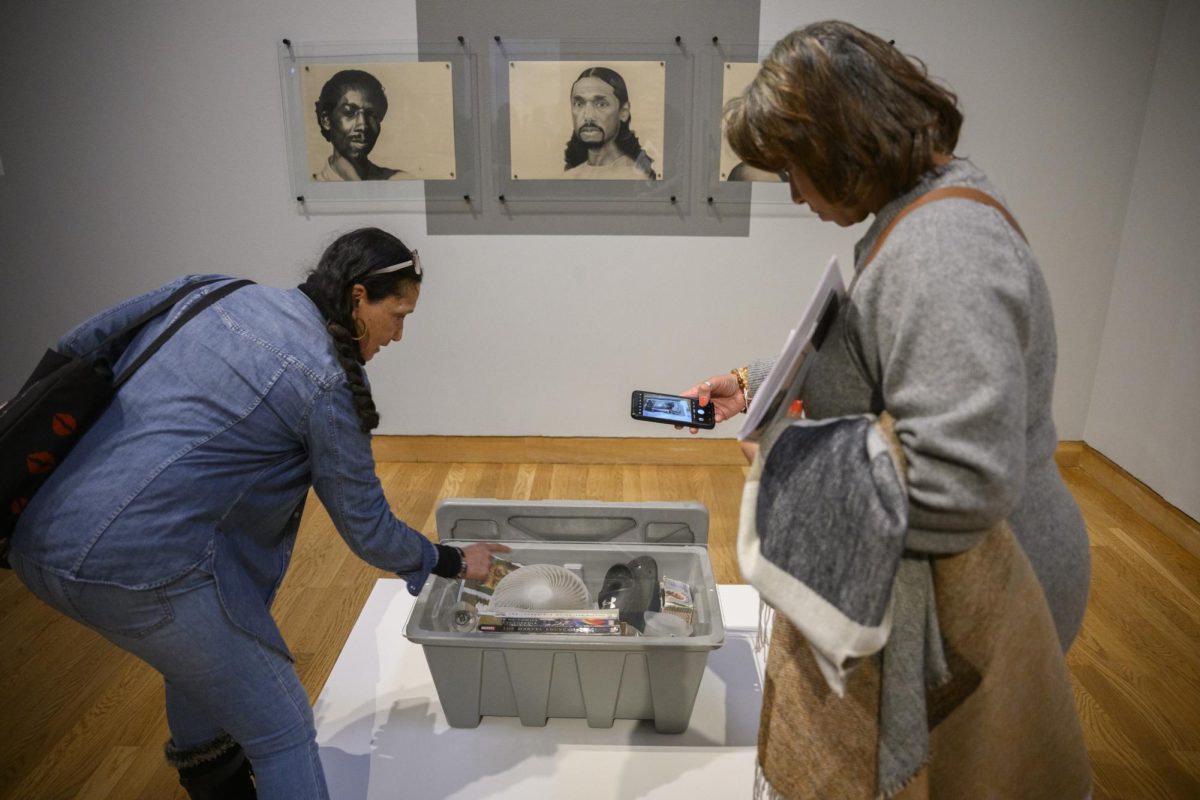According to the Weisman Art Museum, the average person spends only 15 to 30 seconds looking at a piece of art.
Slow Art Day works to change that.
One day a year, museum-goers are encouraged to slow down, detach from technology and focus on pieces of art for an extended period of time. The Weisman was one of 175 museums worldwide that participated in the event, which was founded 10 years ago on Saturday.
“It’s a lovely idea I think. Art is most valuable when you take the time,” said WAM artist in residence Anna Marie Shogren. “I think people who maybe don’t get into art as much are just missing the opportunity to spend some time with it, letting your mind wander with the work. Being daydreamy or distracted in the space or the presence of art can be really fruitful and be where you feel most moved.”
Shogren was one of three artists who participated in several “interventions” inside the WAM galleries for Slow Art Day.
Working with the school of nursing to study dance and the movement of bodies, especially in health care and among seniors, Shogren’s focus is on the strain of caregiving — a slow and patient job but incredibly meaningful as “we will all be caregivers at one point.”
Lying down on a carpet in the center of a room, Shogren generated a conversation about care, both for the self and for others.

The artist also worked with artists Emmett Ramstad and Theresa Madaus to help attendees face paint, give and receive a “group massage,” sculpt with tissue boxes and dance unapologetically to songs on their phones.
Another artist, Peng Wu, established “nap stations” throughout the WAM galleries, placing homemade pillows and mats under works of art to give viewers a new perspective of well-loved pieces.
Wu works with a neurologist at the University of Minnesota to study how the experience of sleep can become an art form.
Scattered under sculptures and paintings, Wu’s white mats and grey pillow cases offered a place for rest and contemplation.
“I think that in general, people are just inundated with information,” said WAM Marketing and Communications Director Erin Lauderman. “Actually being in front of a piece of artwork and seeing the marks of the paint or really investigating a print and the layers of ink is really different than seeing it on your phone or on your computer.”
The third intervention was a six-minute video of a data stream created by Molly Parker Stuart. Using data from sources riddled with transphobia and transmisogyny (hate memes, tax returns of organizations that exclude transgender women, fetishizing pornography, etc.), Stuart transforms sources of hate into an introspection of love and beauty.
Slowly fluctuating in size, color and style, the data takes on a form of its own. Rippling in geometric squares and distorted typographic-style shapes, the artist allows viewers to focus on the motion of the data rather than the content.
“I think a lot of people have it in their mind the galleries that they want to see, so kind of taking your time and picking a piece of artwork to really get personal with is different for people,” Lauderman said. “It’s sort of nice giving yourself the permission to do that. I think some people come with a pre-defined expectation of what they want to do, so [it’s good to] be open to looking at a piece of art in a different way.”
As soft rain ran down the glass windows of the Weisman, people of all ages sought cover from the dreary afternoon in the warmth of the galleries, content to simply dance, sleep and admire art.
















